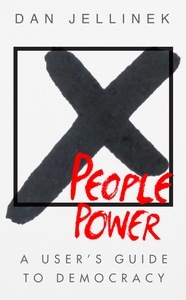- Home |
- Publishing |
- Events |
- Research |
- Register
» Home / Latest News / Publishing news / Can governments (sometimes) use 'crowdfunding' to pay for services?
Can governments (sometimes) use 'crowdfunding' to pay for services?
Publishing news published: Wednesday 6th March 2013

Most governments use taxation to raise the majority of their revenue, writes Craig Thomler. In its simplest form, tax involves placing a share of the income earned by eligible entities into a pool.
The modern form of income tax and corporation tax was not invented until 1799, where it was used in the UK to finance the Napoleonic wars.
Before this, national governments used other means to raise funds for public services, including 'user pays' road tolls, building levies and the sale or rent of goods, public assets and rights. In fact, many of these other forms of public revenue-raising remain in use today, alongside income and corporation tax.
While there is often debate how governments spend tax revenue, however, it is less common for them to discuss new ways of raising funds. While there is much tweaking around the edges, the main approaches used to raise a government's pool of money have remained largely unchanged for centuries.
However, with the rise of the internet, a brand new approach to funding government activities has become viable - crowdfunding.
Crowdfunding involves asking citizens to each provide a small amount of funds for worthwhile projects, with many individuals donating at a micro-scale.
For example, a dam costing $10 million could be funded through having 100,000 households each donate $100, or the citizens could fund a portion of the dam's costs in this way, with other sources of public funding making up the difference.
In truth, this is not a completely new approach to raising public funds. For centuries, rich philanthropists have donated large sums of money, land or property to worthwhile causes. Equally, communities have come together to raise funds, donate materials and even physically help to build public works.
There have also been ways in the past for individuals to contribute to funding public infrastructure, such as allowing people to "adopt" potholes or sponsor park benches.
However, before the arrival of the internet there was no cost-effective approach to co-ordinate "crowdfunding" on any significant scale. The cost of informing citizens, collecting their money and then investing in public infrastructure or services outweighed the money that could be raised through this approach.
Using the internet, however, it is now extremely cost-efficient for organisations to raise large sums of money through crowdfunding.
Examples of this abound in the private sector already. Websites such as Kickstarter and Indiegogo in the US, Crowdfunder and Peoplefund.it in the UK and Pozible in Australia have demonstrated that projects can raise thousands, even millions of dollars or pounds for things people care about, whether it be a Bicycle Academy in Somerset (£40,000); a 'reinvented' remotely controllable LED lightbulb - LIFX (US$1.3 million); the world's first Tesla museum (US$1.3 million); a computer game, such as Project Eternity (more than US$4 million); or even the Sweet Bones café I had lunch at last Sunday in Canberra (AU$12,000 raised).
The range of projects that people are willing to fund - from art forms to new products and services - has proven to be very large.
In fact, crowdfunding is demonstrable not only for the private sector. Governments and community groups have begun employing the approach to supplement their other revenue sources.
In the US, the city of Colorado Springs turned to crowd funding to raise the money required to keep their streetlights turned on. In the UK, through a website called SpaceHive, citizens are funding free wi-fi in Mansfield, an urban oasis in Stockwell and a micro-gallery in Frome. In the Netherlands the Rotterdam government is even funding a footbridge as a test for broader use of the approach, with citizens able to buy individual planks or sections on a website called "I Make Rotterdam".
Even in Australia, the Western Australian government's film financing body, ScreenWest, has been experimenting with partial crowd funding of local movies, with a crowd funding project in partnership with Pozible.
Platforms are springing up around the world dedicated to crowd funding public infrastructure, from Neighbor.ly and Citizinvestor in the US, Brickstarter in Europe and SpaceHive in the UK.
It is still too early to tell how useful crowdfunding will in a public sector context. However, evidence is mounting that the approach will play a significant role in future revenue-raising efforts.
While crowdfunding could never replace taxation, which provides 'bottom-line' ongoing funds for government operations and priority activities that people need but may not fund, the approach offers potential to provide top-up funds for public projects that people value.
By diverting 'popular' public projects onto a partially or fully crowd funded model, governments could divert pressure off funding for essential services.
The use of crowdfunding could also shift the role of government agencies.
Rather than being simply a 'cash machine' that takes money in and gives it out, providing a balance and outcomes at the end of each year, agencies could take on the additional roles of being the convenor of communities to raise the funds and then become the custodian, not the controller, of the public money raised.
Potentially, agencies would be required to directly account to the community on how and where crowd funds were spent and be directly accountable for the delivery of the outcome. This could involve reporting back to a community on the progress of a crowdfunded initiative on a monthly - or even weekly - basis, providing details on progress and expenditure.
With the growing awareness and acceptance of crowdfunding models and the potential for its use in the public sector, perhaps in a few years, rather than debating tax increases or expenditure cuts, governments will consider a broader range of internet-enabled options for partially or fully funding some of the infrastructure that communities wish to have built.
The early adopters in governments have already begun using the approach, so by the time other agencies and councils are prepared to dip their toes in, there should be a body of experience on how to crowd fund successfully in the public sector.
All it takes is an open mind and a willingness to innovate.
NOTE: Craig Thomler is Managing Director of Delib Australia, a subsidiary of UK-based digital democracy company Delib. He writes the eGovAU blogon digital government.
Article originally published in E-Government Bulletin issue 351. Click here to visit issue 351 index.
Or to register for the free email newsletter E-Government Bulletin and receive more stories like this to your inbox fortnightly, click here.







